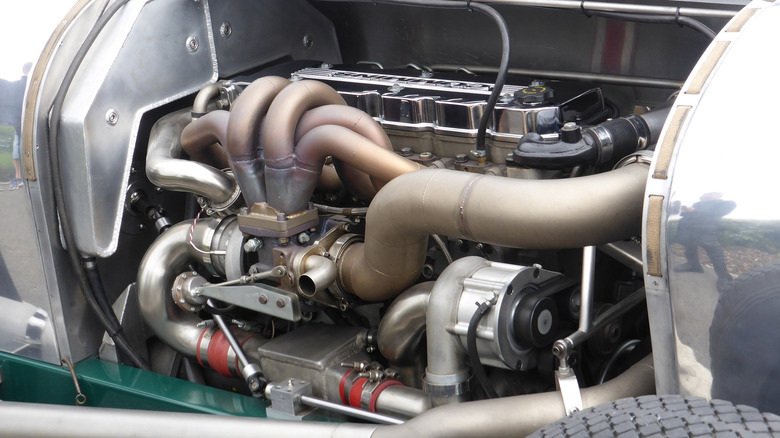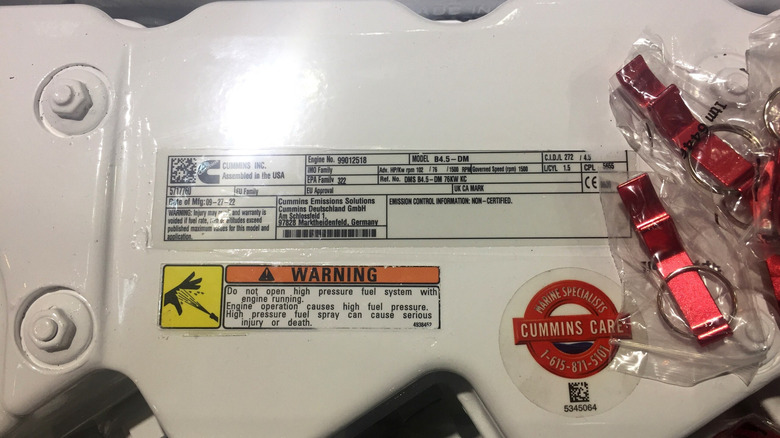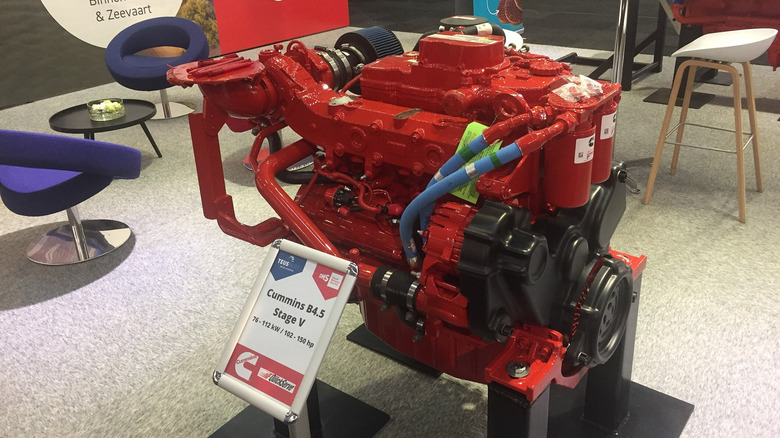This Diesel Engine Is The Oldest One Still In Production Today
Launched in 1984, the Cummins B-Series is the longest-running diesel engine family that is still being produced today. It was originally built for farm machinery, but quickly became known for its toughness by using direct fuel injection without the need for glow plugs,which made breakdowns less likely. Its jump to pickup trucks came in 1989 when the Dodge Ram received the 6BT, a 5.9-liter inline-six version. This engine is considered the best diesel engine ever made, helping to cement the B-Series as an icon by bringing big truck torque to light-duty models.
Cummins extended the lineup to include four-cylinder and larger six-cylinder options over time, eventually introducing the ISB versions with electronic controls in 1998. The latest 6.7-liter ISB is currently being produced in various factories around the world, such as North Carolina, Mexico, Brazil, Turkey, and the United Kingdom. Despite changing emissions laws and technology advancements, the B-Series' design has been proven to be adaptable, keeping it alive for more than 40 years without interruption.
Inside the design and why it lasted so long
The reason why the Cummins B-Series is one of the longest lasting diesel engines comes down to its engineering. Heavy cast-iron blocks are used for both the four- and six-cylinder versions with bores cut directly into the metal, and are also paired with a one-piece head that minimizes weak areas.
Early 5.9-liter engines had a 12-valve setup, then was later updated to a 24-valve design to improve airflow and efficiency. The gear-driven camshaft is still one of its strongest features, because it outlasts belt- or chain-driven designs in heavy use. To balance power with emissions compliance, the way fuel is delivered has evolved as well, changing from Bosch mechanical pumps to modern electronic high-pressure common rail systems.
Every B-Series is equipped with a Holset turbocharger, with intercooled options to boost efficiency and torque, which is why torque ratings range from 610 lb-ft in older 5.9-liter engines up to more than 1,000 lb-ft in current 6.7-liter models. The B-Series engineering design reduces wear while maintaining output, by offering low rpm pulling power with less strain, which is also its secret to being dependable decade after decade.
The industries still using it today
The real story of the Cummins B-Series is how many industries depend on this engine today. It's gone from trucks to tractors to construction gear, proving its value way beyond its age. the Ram 2500 and 3500 pickups, UK buses like the Dennis Dart, and countless RVs use it to this day.
In construction, you'll find the B-Series in excavators, skid-steer loaders, and backhoes that can be run for hours under constant stress. Farmers depend on the engine for tractors, combines, and irrigation pumps, where continuous use is important. Its reach even extends offshore in driving commercial fishing boats, harbor work boats, and small ferries.
Municipal hospitals use the B-Series to keep their gen sets dependable as a reliable power source, while factories install them in forklifts, cranes, and compressors. Across all these fields, there is one common factor: Trust in an engine that has no problems passing one million miles or hours of operation if maintained correctly. Early models had notable flaws like dowel pin issues, which was quickly addressed. Here we are, four decades later, and the B-Series still represents endurance, and it's still a super reliable powerhouse with tons of uses.


